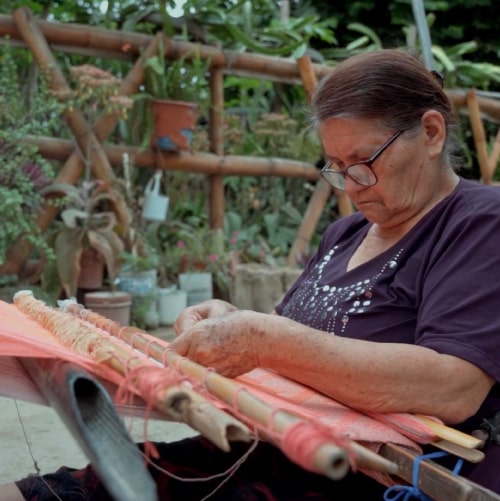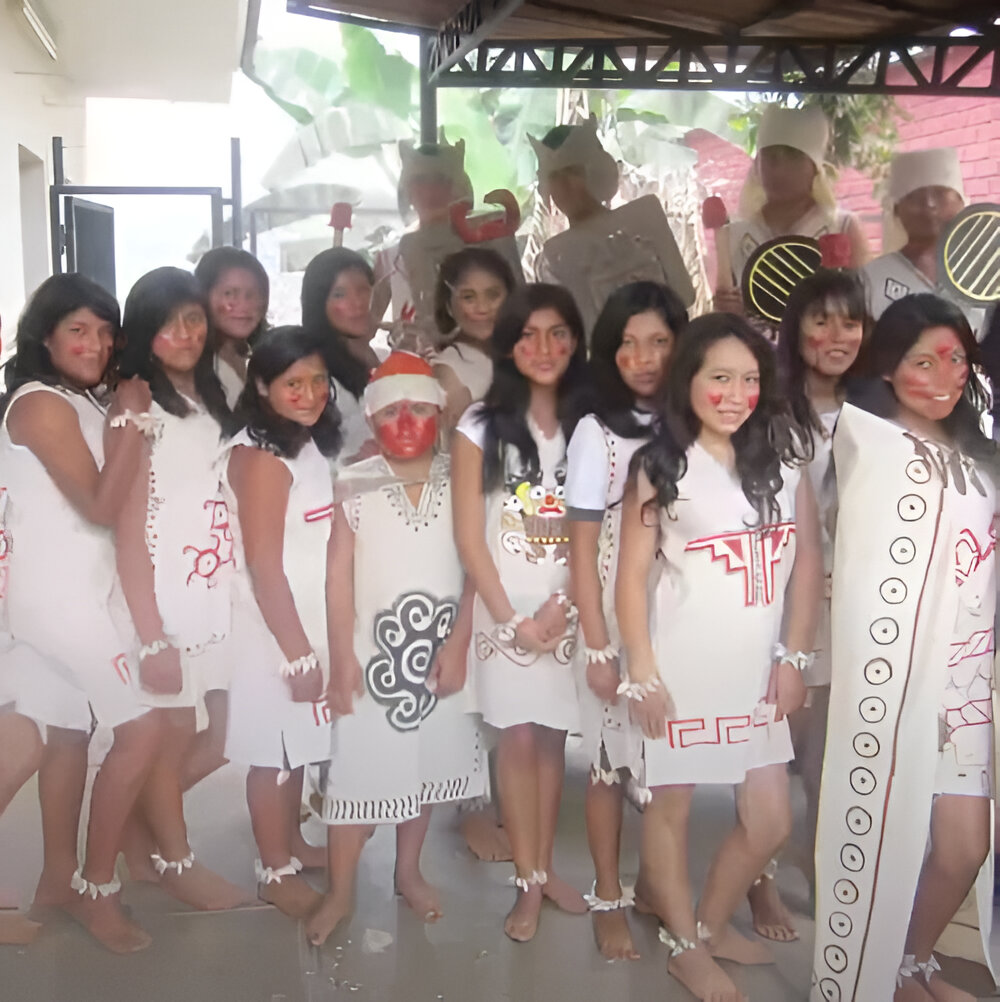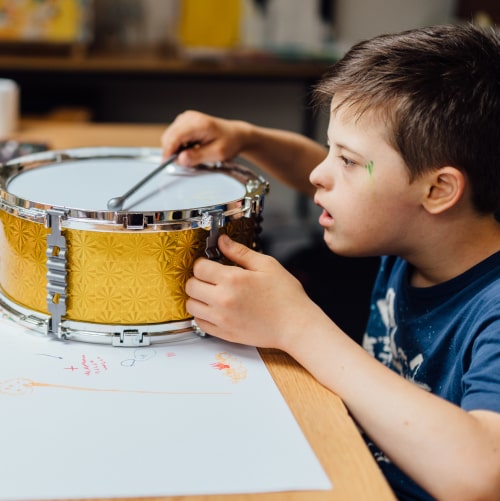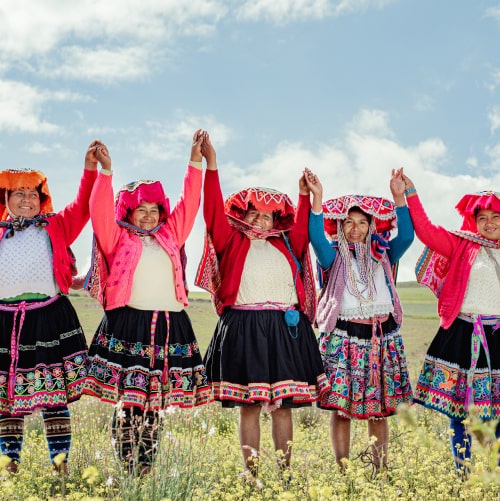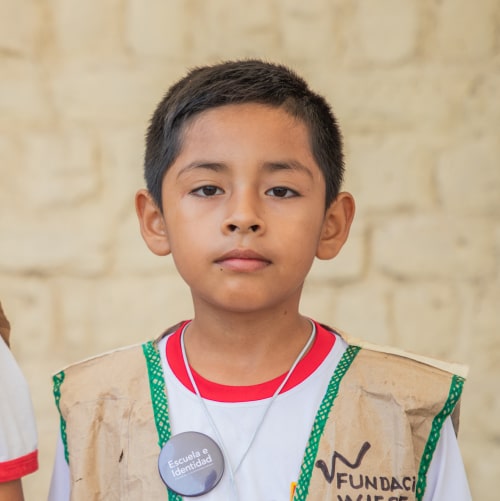In the collections of the different museums of Peru, one can see textile pieces made with the ancestral technique of weaving, which vary according to the pre-Hispanic society that created them. For example, the backstrap loom. Given this, the question arises: are all these techniques still practiced in communities nowadays? Let us see what legacies they left us.
A little bit of history about the ancestral technique of weaving
The textile activity practiced by our ancestors had functions different from those of today. Though utilitarian textiles were created, which served as protection from inclement weather, they were also crafted to convey messages.
In many of these loom items we can appreciate iconographies or images that transmit to us ideas, myths, stories, beliefs and the worldview of ancient pre-Hispanic societies. In terms of their production, different materials and weaving techniques were used.
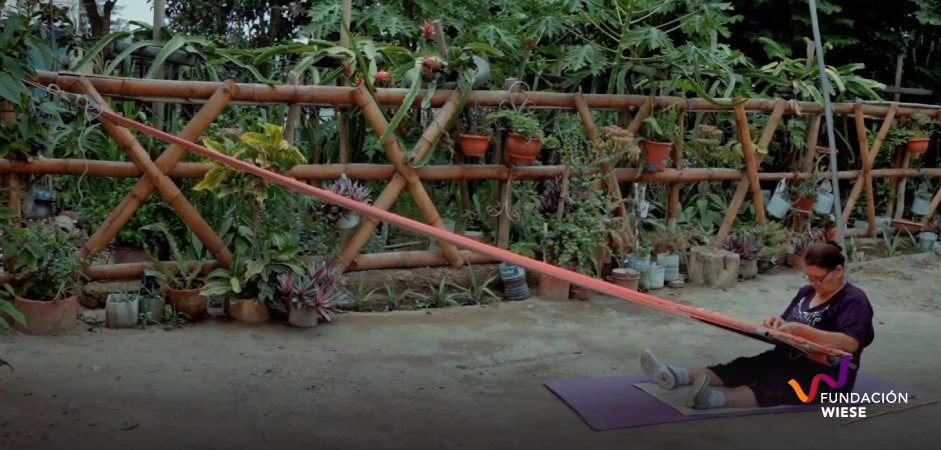
At present, the textile activity has not ceased. What has happened, however, is that it has been modernized. In fact, in some communities ancestral weaving techniques such as the backstrap loom are still practiced.
What is the backstrap loom?
The backstrap loom is a weaving technique in which two wooden beams are distributed horizontally, one at the top at a fixed point and another at the bottom goes at the waist of the weaver; hence the name backstrap loom.
If we take a look at the village of Farías, in Chocope-Ascope, we can find the workshop of Mrs. Norma León, who has more than 50 years of experience as a weaver. Norma learned to knit as a child thanks to her mother, which turns out to be a tradition, since her daughter also dedicates herself to this activity.
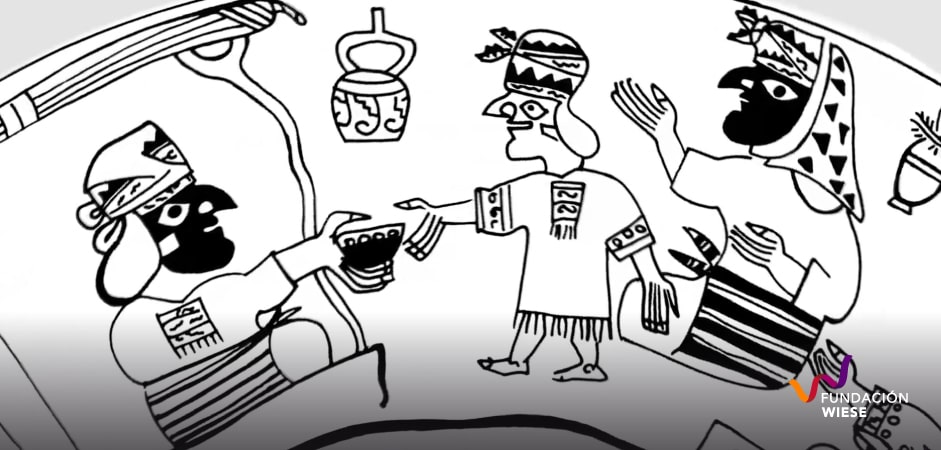
On their fabrics, made with cotton and dyed with local plants and industrial materials, we can observe Mochica iconography. For example, manta rays and fish.
How to weave on a loom with an ancestral technique?
As for the elaboration of the fabrics, first it is necessary to make the loom. To do this, one must first do the warping, which consists of placing some stakes and running from one side to the other carrying the threads. Then, one moves on to the fabric itself, where the threads have to be separated according to the design that is going to be made.
Craftsmanship today
The work of the artisans who work the threads to make beautiful looms and textiles plays an important role, since it promotes the identity of the place.
Today, artisans like Norma not only transmit their ancestral knowledge to their family, but also to their community, through training or the preparation of the final products that she sells. Craftswomen such as her are key players in the communities because they are the ones who safeguard the ancestral techniques, and are the living social memory of their communities.
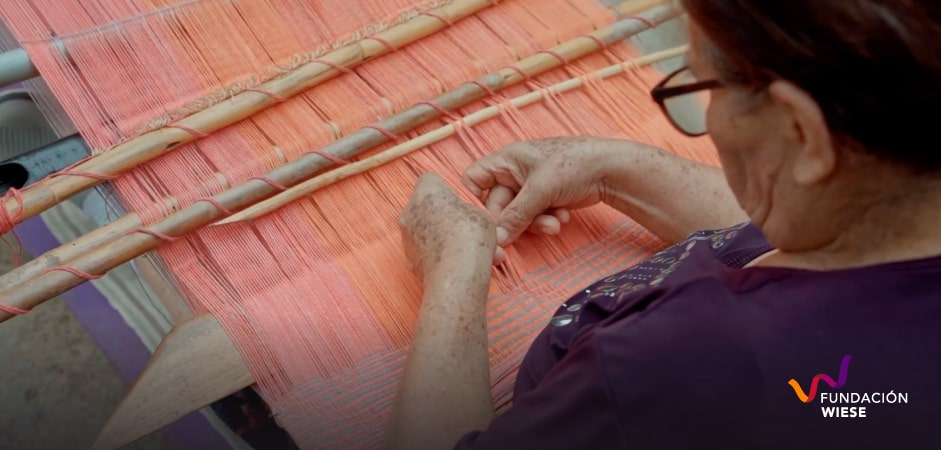
About the series “Know-hows of my Community”
The series “Know-hows of my Community” is the new educational resource developed by the Wiese Foundation. In this first season, composed of seven chapters, it seeks to present, disseminate and preserve the knowledge, memories, traditions, customs and communal beliefs that are part of the history and identity of the districts of the province of Ascope in La Libertad. Check out this and the other videos in the series here! and contribute by learning, for the preservation and appreciation of this ancestral knowledge.
You can also read:



